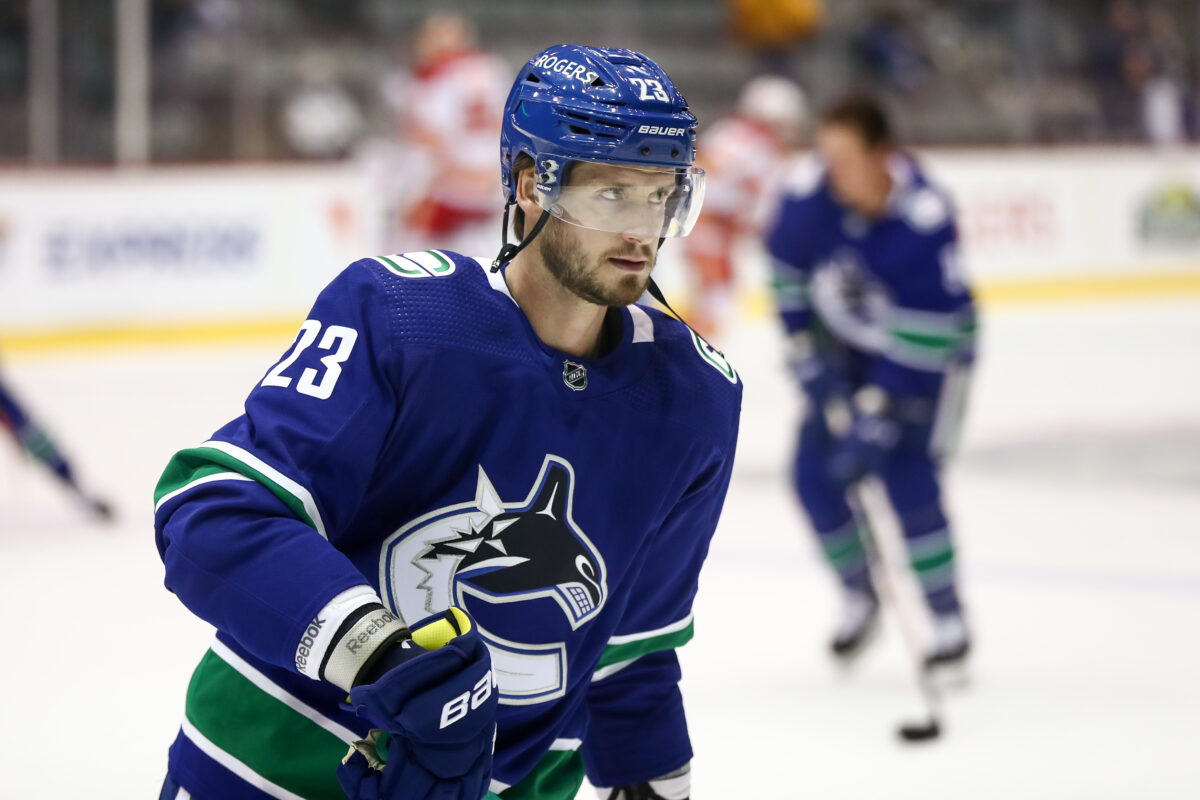Oliver Ekman-Larsson has four years left on his $66 million eight-year contract with an average annual value (AAV) of $8.25 million. The Vancouver Canucks weren’t even close to receiving value from this player for this contract. Actually, they were doomed from the start. When they acquired him from the Arizona Coyotes, he was already 30 years old and his performance was in a declining trajectory. During the 2022-23 season, he posted just two goals and 20 assists in 54 games while averaging 20 minutes of ice time a night. Those are numbers more to be expected from a fifth or sixth defenseman.

While a buyout involves paying a portion of the player’s remaining salary, it can still result in cost savings compared to keeping the player on the roster. This can be especially beneficial if their performance does not justify their salary or the team faces financial constraints.
Pros of an Ekman-Larsson Buyout
Salary cap relief: The primary advantage of a player buyout is the immediate salary cap relief it provides to the team. Buying out Ekman-Larsson’s contract will save the Canucks $7.1 million in cap space this season and $4.9 million next year. They will save $2.5 million for the two years after that and then have a cap charge of $2.13 million for four more years. This will free up space under the salary cap with the goal of re-signing Elias Pettersson and Filip Hronek.
Related: Canucks Buyout Options for the 2023 Offseason
Flexibility: With the buyout combined with the salary cap increase expected to be somewhere north of $4 million next year, the Canucks should gain more flexibility with their roster management. They should be able to retain other players and make additional roster moves. They can more easily remove a player who may not be performing up to expectations or who doesn’t fit into their long-term plans and potentially replace them with a more suitable player.
Roster changes: Buying out Ekman-Larsson opens up a roster spot, which another player can fill. The Canucks may use this opportunity to promote a prospect or sign a free agent.
Cons of an Ekman-Larsson Buyout
Dead cap space: Despite the advantages mentioned above, buying out Ekman-Larsson still creates dead cap space on the Canucks’ payroll. This refers to the portion of the player’s contract that continues to count against the team’s salary cap even after the buyout. This can limit the team’s financial flexibility and make it more challenging to make other roster moves. This buyout will have a negative effect on the Canucks’ salary cap until the end of 2031.
Perception and reputation: Depending on the circumstances surrounding the buyout, it can have negative implications for the team’s reputation or the player’s image. Fans, media, and other players may scrutinize the decision, especially in the case of a high-profile player.
Long-term consequences: The ramifications of a buyout can extend beyond the immediate term. Dead cap space from a buyout can impact a team’s ability to maneuver the salary cap for several years, potentially affecting their ability to sign or retain key players.
Related: Canucks’ News & Rumors: Allvin, Pearson, Pettersson & More
The financial impact of the Ekman-Larsson buyout has both advantages and disadvantages for the Canucks. On the positive side, it provides immediate salary cap relief, allowing them to potentially sign or retain other players and make necessary roster moves. The flexibility gained from buying out Ekman-Larsson can also benefit the team’s long-term plans. However, there are drawbacks, such as the creation of dead cap space that limits financial flexibility and can hinder future roster management. The long-term financial obligations resulting from the buyout must also be considered. Ultimately, only time will tell whether it was a prudent decision for the Canucks organization.
